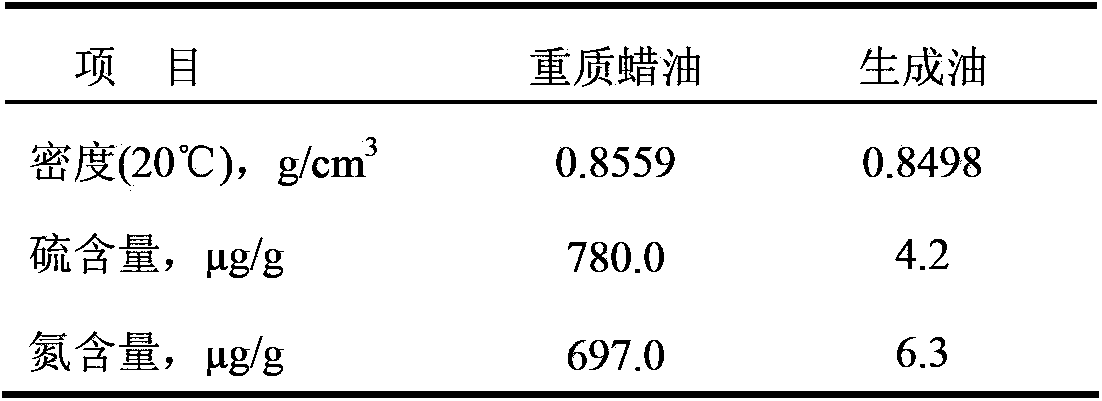Multistage hydrogen dissolution liquid phase hydrogenation reaction method
A liquid-phase hydrogenation and hydrogen-dissolving technology, which is applied in the fields of hydrogenation treatment process, petroleum industry, and hydrocarbon oil treatment, etc. It can solve the problems of lower reaction efficiency, inability to effectively handle sulfur, and no open reactor structure, etc.
- Summary
- Abstract
- Description
- Claims
- Application Information
AI Technical Summary
Problems solved by technology
Method used
Image
Examples
Embodiment 1
[0026] After the mixed diesel oil reaches the required temperature through the heating furnace, it is fully mixed and dissolved with hydrogen in the gas-liquid mixer, and then enters the hydrogenation reactor. The reaction conditions are: hydrogen partial pressure 6.5MPa, reaction temperature 310°C, hydrogen-oil volume ratio 300: 1. The liquid phase product enters the stripping tower for stripping. Part of the stripped liquid phase product enters the heating furnace as circulating oil through the circulating pump, and the other part of the liquid phase product enters the product tank in the form of product. The raw material oil properties and product properties are listed in Table 2.
[0027] It can be seen from Table 2 that the sulfur and nitrogen content in diesel can be significantly reduced by adopting this technology.
Embodiment 2
[0029] The raw material of heavy wax oil goes through the heating furnace to reach the required temperature and fully mixes and dissolves with hydrogen in the gas-liquid mixer, and then enters the hydrogenation reactor. The reaction conditions are: hydrogen partial pressure 12.0MPa, reaction temperature 365°C, It is 800:1. The liquid phase product enters the stripping tower for stripping. Part of the stripped liquid phase product enters the heating furnace as circulating oil through the circulating pump, and the other part of the liquid phase product enters the product tank in the form of product. The raw material oil properties and product properties are listed in Table 3.
[0030] It can be seen from Table 3 that the content of sulfur and nitrogen impurities in heavy wax oil can be significantly reduced by using this technology.
Embodiment 3
[0032] The crude paraffin raw material goes through the heating furnace to reach the required temperature and fully mixes and dissolves with hydrogen in the gas-liquid mixer, and then enters the hydrogenation reactor. The reaction conditions are: hydrogen partial pressure 7.0MPa, reaction temperature 240°C, hydrogen-oil volume ratio 400 :1. The liquid phase product enters the stripping tower for stripping. Part of the stripped liquid phase product enters the heating furnace as circulating oil through the circulating pump, and the other part of the liquid phase product enters the product tank in the form of product. The raw material oil properties and product properties are listed in Table 4.
[0033] It can be seen from Table 4 that the color and light stability of paraffin wax products can be improved by using this technology.
PUM
 Login to View More
Login to View More Abstract
Description
Claims
Application Information
 Login to View More
Login to View More - R&D
- Intellectual Property
- Life Sciences
- Materials
- Tech Scout
- Unparalleled Data Quality
- Higher Quality Content
- 60% Fewer Hallucinations
Browse by: Latest US Patents, China's latest patents, Technical Efficacy Thesaurus, Application Domain, Technology Topic, Popular Technical Reports.
© 2025 PatSnap. All rights reserved.Legal|Privacy policy|Modern Slavery Act Transparency Statement|Sitemap|About US| Contact US: help@patsnap.com



